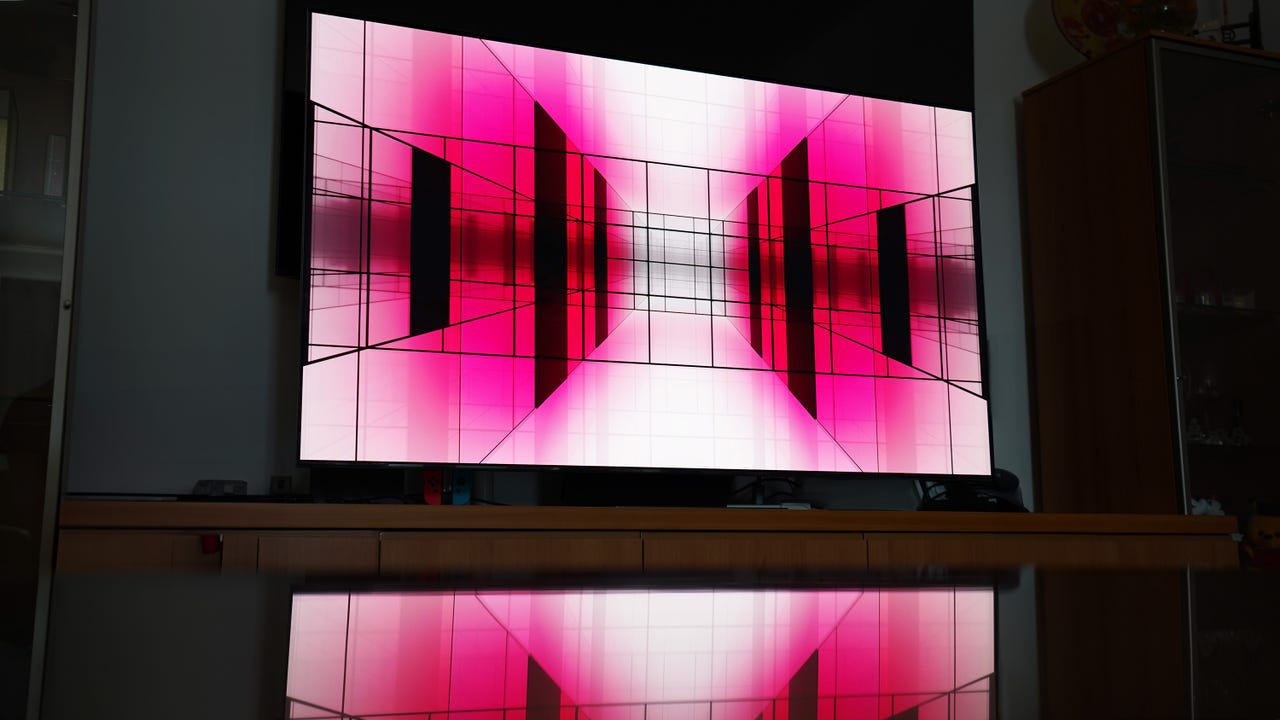
































MediaTek recently announced a new Pentonic 800 chip, intended to provide capabilities that future OLED TVs can use. Notably, the new chip introduces features such as 165Hz Variable Refresh Rate (VRR), improved AI processing, and Wi-Fi 7 support, advancing the current state of TV technology.
Also: Your Amazon Fire TV is getting a free generative AI upgrade. Here's how it works
The Pentonic 800 shows considerable enhancements compared to previous models, including up to 50% faster processing and a 60% reduction in memory bandwidth usage. It includes a quad-core 1.8GHz Arm Cortex-A73 CPU, an Arm Mali-G557 MC1 GPU, and 64-bit DDR4 RAM operating at 3200Mbps.
The chip integrates a motion estimation and compensation engine (MEMC) that Mediatek says should eliminate judder and provide a more fluid viewing experience. The chip further offers full region demodulation, which refers to the TV demodulator's ability to receive and process broadcast signals from multiple standards, high-resolution audio processing, and MediaTek's AI processing unit.
One of the more exciting features of the Pentonic 800 is its advanced AI engine. Due to its improved object and scene recognition capabilities, the chip should enable "near-perfect restoration of content" while eliminating any noise or artifacts from broadcasting or internet streams. TV upscaling, in general, should see a big improvement.
Some 8K TVs, like Samsung's QN900D, support 8K resolution upscaling.
The chip also promises to deliver improved gaming experiences, supporting 4K resolution at 165Hz VRR -- a feature previously limited to high-end gaming monitors. Although factory consoles cannot reach such high refresh rates yet, PC gamers with customized gaming rigs can take advantage of the 165Hz for smoother gameplay. Of course, some TVs today boost even higher refresh rates but at lower resolutions (typically 1080p).
Also: I tested LG's new QNED90T TV, and it made me miss my OLED a little less
Additionally, the Pentonic 800 is set to introduce Wi-Fi 7 support to future TVs, a protocol that brings faster and smoother streaming and data transfer compared to current Wi-Fi 6 and Wi-Fi 6e systems.
While no manufacturer has officially announced plans to incorporate the Pentonic 800, it is highly likely the chip will be used across panels that run on Google TV software (Sony, TCL, and Hisense), so we can expect manufacturers to integrate the chip for their upcoming premium 4K sets. Given the widespread adoption of previous MediaTek chips -- reportedly found in 60% of the TVs in the world -- the new Pentonic 800 is expected to push TV capabilities in the near-distant future.
 Etiquetas calientes:
Casa y oficina
Etiquetas calientes:
Casa y oficina